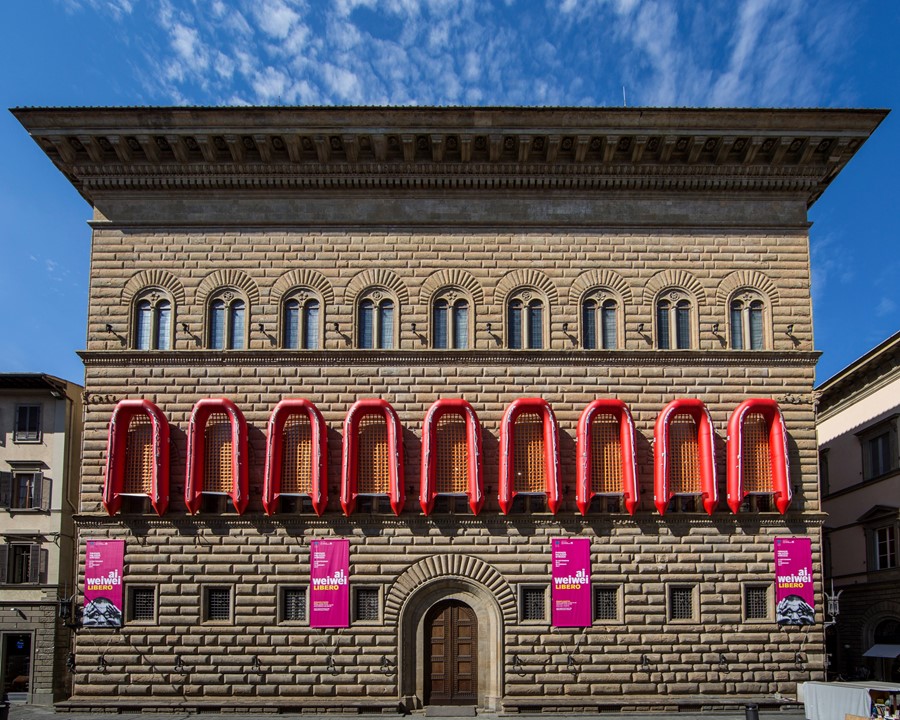The incendiary artist tells AnOther about his new retrospective at Palazzo Strozzi in Florence – a 15th-century palace which embodies the political history of the city
For the Beijing-born artist Ai Weiwei, freedom has come at a cost. The “artivist”, in honour of his deceased poet and dissident father, has dedicated his life to empowering the Chinese masses, telling the tale of their historical plight by radically sticking it to “the man”. From famously smashing up 2,000-year-old Chinese Han Dynasty urns in order to highlight the country's destruction of cultural heritage, to filling the turbine hall of the Tate Modern with one million handmade porcelain sunflower seeds as a representation of faceless factory workers, Weiwei almost needs no introduction. He has become known for works which share no common physicality in their method or material, but which are bound by the idea of revolt against the state, humanitarian relief, and a shared cultural responsibility. It’s this sense of burden which has become his signature, unifying an exhibition like a taut rope, hanging from room to room.
Now, Palazzo Strozzi in Florence showcases Italy’s first major retrospective of Weiwei's work with Libero. It's the first time that the artist has been able to work with the freedom to visit since the Chinese authorities repatriated his passport in 2015. And, uncannily, the show is located in the country that gave rise to political art, from Imperial Rome to the dogmatic Renaissance.
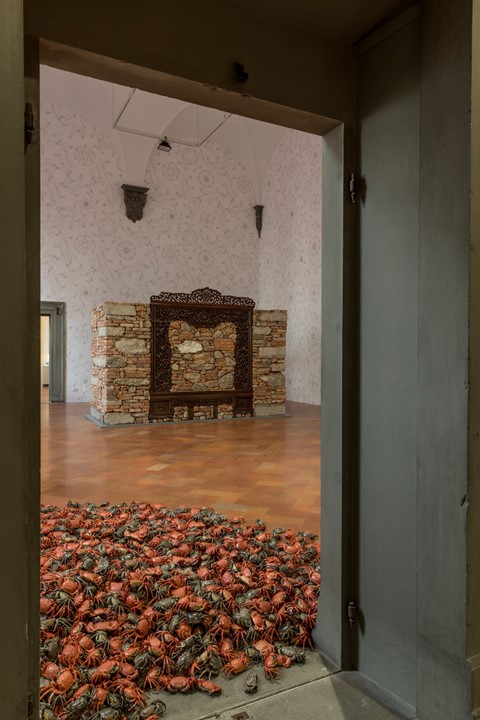
The exhibition chronicles the cornerstones of Weiwei's vast opus, from his 1980s readymade objects, to his most recent international works, including a new installation consisting of 22 luminous orange dinghies strapped to the façade of the Palazzo like ornamental columns, highlighting Italy’s role in the migrant crisis (which, at its unveiling, trended higher on Italian Twitter than Milan Fashion Week). Rooms filled with hundreds of identical bicycles, or Lego brick portraits of Italian Renaissance exiles are profoundly didactic for a conceptual artist, but that’s what gives him his mass appeal – clear process and instruction.
It doesn't stop there, however, as the show extends beyond the physical confines of the Palazzo and makes defiant appearances throughout the city. Carved marble surveillance cameras are hidden in the historic Uffizi Gallery, for example, while photographs of the artist flipping the bird to cultural institutions such as the White House, Tate Modern and the Palazzo Strozzi itself plaster the city’s food market.
Here, Weiwei, the defender of the apologist and critic of the privileged, discusses his art, life and politics.
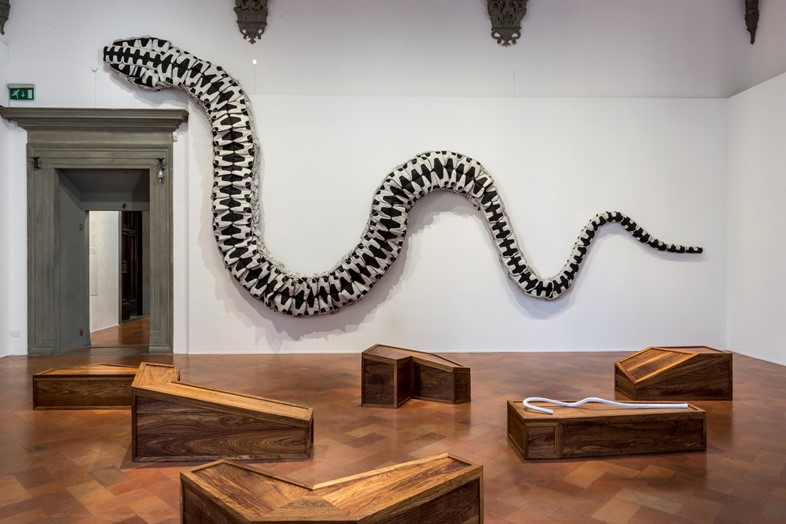
On the current state of politics…
“With the current world political situation, despite all the certainty, it's clear that it's time for change. Structure is coming under conflict on the front line and in our hearts and minds. We always must question as a human being, what is best. We’re not in a time where we can forget others' existence.”
On the migrant crisis…
“I have seen so many refugees arriving on the shores – I have been in Greece, Lesbos, Turkey, Lebanon, Iraq, Italy, Jordan, Israel, Gaza, Kenya, and I’m trying to get into Syria. I have a strong respect for anyone who makes sacrifices and takes risks for freedom and a better future. Those people are the heroes of our time, and my work shows respect for them. They are my brothers.”
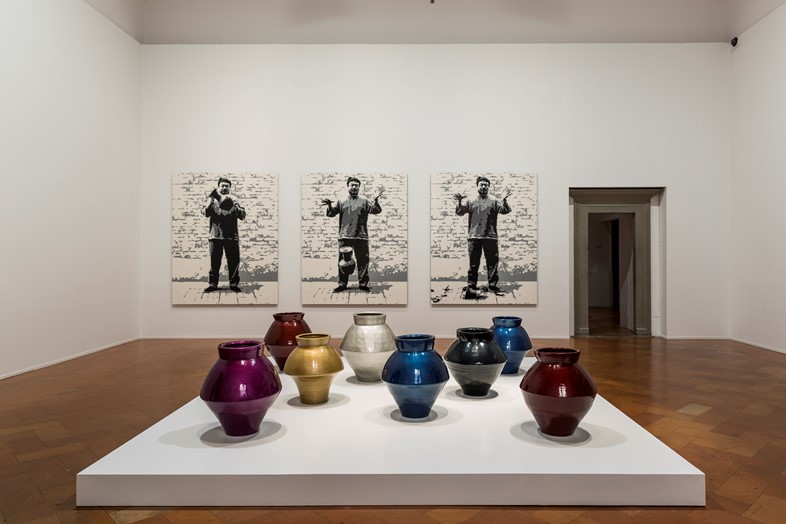
On his inflatable life raft artworks…
“I grew up as a refugee and am very keen on discussing this issue, so I made this work to make a statement about the contemporary situation. I could never have expected this installation to catch so many imaginations, and cause so much criticism, which is fine as contemporary art is about raising the consciousness and affecting people.”
On Italy and political art…
“My father used to tell me as a child about Italy, as the birthplace of the Roman civilisation. It has such a unique history of art and politics, especially in this Renaissance building, so I am honoured to be part of it.”
On social media…
“We are having a celebrated moment with communication, as both a moral and aesthetic performance. If these methods are successful, is still questionable. I work in many ways with different mediums; film, internet, social performance and writing. My writing takes a long time – my last book took two years, unlike an Instagram. As a human you have never been so liberated as you are today; a project of communication can take one year or one second.”
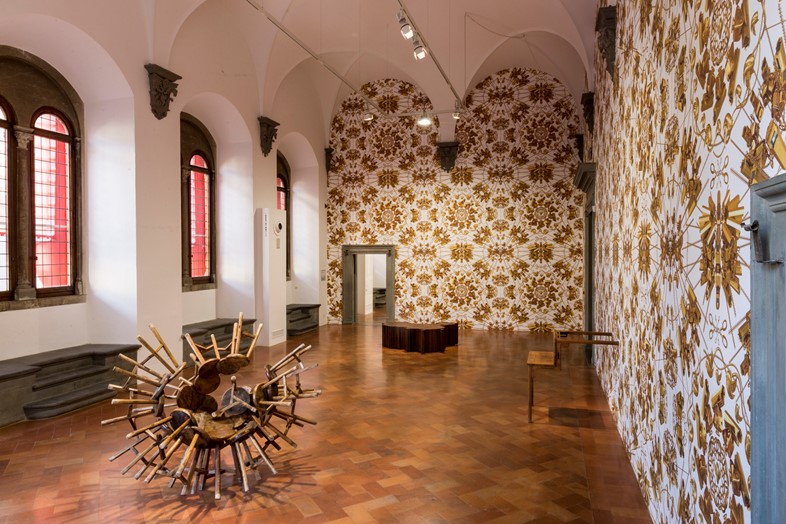
On his use of the middle finger…
“In China, showing someone the middle finger is understood as a foreign language. It’s known from abroad because everyone has seen it in the movies from Hollywood that started showing in the 1960s. It's like how you have the fist in Italy – it's known as a western gesture, which adds to its symbolic value.”
On his photos of himself telling cultural institutions to 'fuck off'…
“It's all about surveillance, and power. These places are huge cultural institutions that have so much influence, and when they talk, people listen. The people at the tops of these organisations have so much sway over the public, telling us what to do, say and think, and we often don’t realise.”
On the Tate Modern…
“I love the Tate Modern I think it's wonderful, but it has too much power over art in the UK. It’s helped me a lot and is a good gallery; it’s a cultural monster, but a good one.”
On his favourite works…
“I don’t like any of the works where I’m sticking my finger up, but that isn’t the point – you don’t need to like something for it to function effectively.”
Ai Weiwei, Libero is on display at the Palazzo Strozzi until 22 January 2017.
